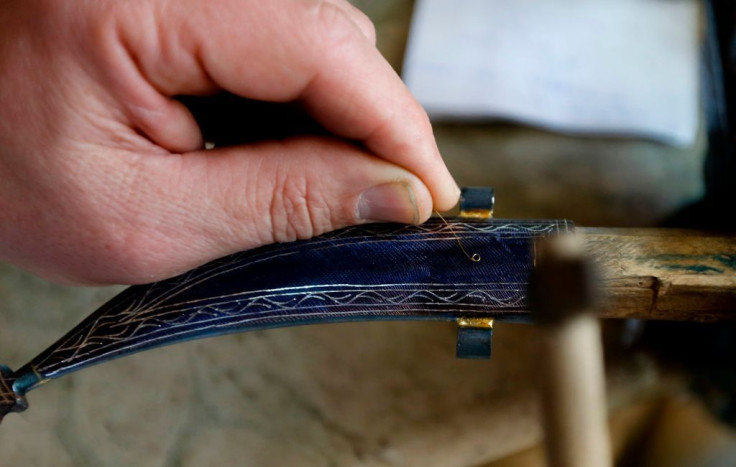Human Bone Daggers: Femur-Made Incredibly Strong Weapons For New Guinea Warriors

Nearly a century ago, daggers made of human bones, particularly the femur or the thigh bone, were widely used by people living on the Pacific Island of Papua New Guinea. The weapons carried elaborate markings and were used by them not only for hunting, fighting, and ceremonies but also as a symbol of social status.
There, however, was a slight variation in the tools. A majority of the daggers were forged from the thigh bone of a massive flightless bird called cassowary, while some had thigh bones taken particularly from the bodies of respected men or soldiers who lost their lives on the battlefield, per Gizmodo. When a soldier died, his heir used to acquire the bone and carry it around as a prestigious weapon.
The reason for using two different kinds of bones for the same purpose was not clearly known until a group of researchers from Dartmouth College, conducted a detailed analysis of 11 bone daggers — five from humans and six from cassowary.
They analyzed the chemical and structural makeup of the two types and found they both are pretty same in terms of physical properties, but the human thigh bone made a slightly better, stronger weapon, with more resistance to bending.
One cassowary dagger, sourced from a private art dealer, was put under real-world physical stress to establish its tensile strength and failure point, while the remaining ten, which were computer models of daggers kept on display at the Hood Museum of Art, Dartmouth, were tested under the impact of simulated stressors.
“We slowly bent the cassowary bone dagger until it broke. All the while, we measured how the bone resisted breaking,” Nathaniel Dominy, who performed the tests, told Gizmodo. “We used this information and published information in a computer model to estimate how each bone dagger in the Hood Museum would respond to different kinds of stresses.” They found human bone daggers are mechanically superior to cassowary bone daggers and can bear large loads with fewer accounts of structural failure.
In addition, Dominy and colleagues also discovered human bone daggers were designed in such a way they could withstand higher levels of stress. They had a bigger curvature compared to the flatter and structurally weaker cassowary dagger.
One would expect daggers to be optimized to perfection but this work clearly suggests cassowary daggers were weaker. This, according to the researchers, might be a result of the effort people living at the time would have given to preserve the symbolic value of human bone-made daggers. They designed them to be stronger so they last longer. Meanwhile, the flatter and relatively weaker cassowary daggers would have been used on the battlefield as they were easy to carry around and stab enemies.
The study, titled "New Guinea bone daggers were engineered to preserve social prestige," was published April 24 in the journal Royal Society Open Science.
© Copyright IBTimes 2024. All rights reserved.











